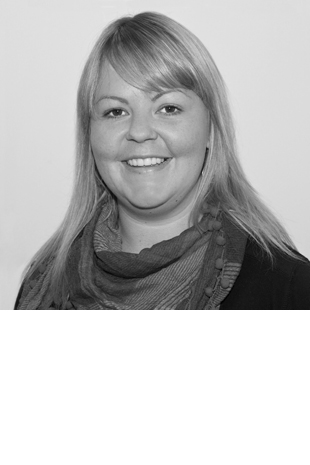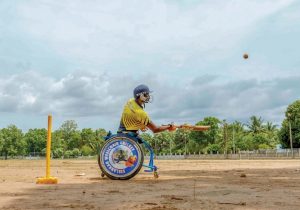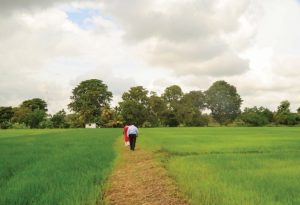The balancing act of being “more than just a grantmaker”
04 Jul 2025
Download More than just a grantmaker: 25 years of partnering for peace and justice, a book commemorating 25 years of the Neelan Tiruchelvam Trust in Sri Lanka.

Kaushalya Ariyathilaka, Neelan Tiruchelvam Trust
2025 marks 25 years since the Neelan Tiruchelvam Trust (NTT) was established. NTT was established with the hope that it would be more than just a grantmaker. NTT is arguably the only local grantmaker in Sri Lanka, working to support communities and organizations to further peace and justice. This is my fifth year at the Trust, and in my time there I have learned that the very act of grantmaking is inherently colonial: wanting to fix communities because they are not “good enough” is based on hierarchical power structures. Donors often work on the premise that they know what is best for “those” communities.
At NTT, we have always wanted to set ourselves apart from the western INGO model of grantmaking. Much has been written about this model, which capitalizes on systems of structural racism, painting the Global South as untrustworthy and lacking in capacity. In addition, this model benefits from holding too much power and too many resources, acting as gatekeepers to continue to hold onto power and to protect their position in the international development system. Unsurprisingly, the ongoing collapse of the Western aid system fueled by the dismantling of USAID is proving just how dysfunctional the global aid and development system has always been.
I have experienced how challenging NTT’s journey has been – especially as a local grantmaker trying to swim against the current in this sector where large donors with much bigger and deeper pockets often get to decide how things are done. For decades, civil society has navigated the aid and development industry by kowtowing to donors. Programmes, processes and structures have been developed because the donors wanted them a certain way. The system is set up against small organizations who do not know how to play the game. Many community-based organizations (CBOs) with no professionally trained NGO staff do not speak the development lingo, do not know what results frameworks are and do not have five-year strategic plans. Instead, this industry that is risk averse, results oriented and keen on branding and visibility, works well for professionalized NGOs.
Early last year, during our capacity assessment visits, we came across many CBOs who were “implementing partners” of a large, national level five-year project funded by a bilateral agency. These implementing partners were being given less than $200 USD per month for their role and were expected to cover their staff and admin costs from that amount. One of the main indicators in the results framework developed for the project was that a minimum of five victims would be identified monthly. The implementing partners who did not identify five victims a month ended up inventing stories of five victims, in order to continue acting as implementing partners. Clearly, the implementing partners were not aware of who had decided on these indicators. On paper this would have been a great project – with national level impact, and with hundreds of local partners to ensure “localization.” But it was exploitative and was built on the very inequalities that it supposedly attempted to challenge. NTT, in its journey of 25 years, has tried its best to not be part of such an extractive and exploitive model of grantmaking.
As a grantmaker with a high-risk appetite, we are also dedicated to capacity building. We must walk a thin line and perform a balancing act of sorts, to ensure that we build the capacity of CBOs, but also encourage agency and ownership in their own programme / project implementation. We do not want to create a culture of fear or compliance over genuine commitment to the communities that are underserved. Instead, we want to create a culture of learning, and this is why our MEAL (monitoring, evaluation, accountability and learning) is centered on the concept of most significant change instead of “success stories.” In this process of building the capacity of our grantee partners we have also grown, and our grantee partners too have contributed to the building of our own capacity. Our approaches have improved over the years because of the learnings we have gained from our partners and the communities they serve.
We sometimes spend weeks discussing with applicants to understand whether the proposed interventions are community centric and align with their aspirations. This requires NTT to be able to understand the local context, but also to have a high level of flexibility. For example, differences in local dynamics and power structures may require grantee partners working on the same type of project to employ different strategies. This is also why we often support CBOs over national level CSOs – because ground presence and being embedded in local realities matters.
We have also learned that grantee partners always try their best to make us happy – because as the granter, we inherently hold more power in our relationship. This requires us to ensure that our approaches are designed to shift power to them. While our grantmaking model does not resonate fully with the “trust-based grantmaking” model, our approach combines some structures of traditional grantmaking with the flexibility of trust-based giving. For example, we have clear expectations of transparency and accountability, but we allow the space for our grantee partners to define how they can co-create those benchmarks with us.
“More than just a grantmaker: 25 years of partnering for peace and justice” documents the story of NTT’s journey so far, with all its highs and lows. Particularly how NTT, as a local grantmaker, continues to learn ”how not to be just a grantmaker” through trial and error.
By: Kaushalya Ariyathilaka, Manager – Programs and Grants, Neelan Tiruchelvam Trust. Kaushalya was a 2023 / 2024 #ShiftThePower Fellow.





